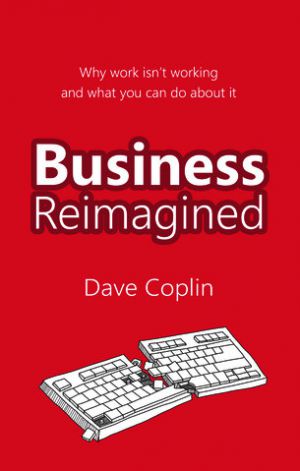
A guide to leading in a crisis
That we’re operating in an uncertain environment is now a given. Leadership is no longer about seeing a crisis through it’s about purpose, preparation, and enabling your people to help steer the ship. Amy Reeve shares how.
... Dave Coplin, author of Business Reimagined and former tech evangelist – chief envisioning officer at Microsoft, actually – is inclined to agree. He thinks the financial crisis was a catalyst for change. “It used to be about one person standing on top of the tallest hill pointing at the rest of the organisation to go in a particular direction,” he says. Good leaders today have learnt from recent history and the ensuing uncertainty to empower their people with purpose, “and then do the most important thing a leader can do: get out of the bloody way”. That takes confidence, he concedes, as well as reciprocal trust and a supportive organisational culture. But get it right and “I guarantee your engagement scores will be the highest in their industry.”
With technology at the centre of this bewildering maelstrom, Coplin is well placed to offer some perspective on its impact. He’s been looking at the transformational potential of tech for over 25 years, including six as director of technology architecture and research for KPMG. “I fundamentally believe,” he says, “that technology is a rising tide that will lift all boats. I’m telling you now: AI is going to be one of the most disruptive things we will have seen in the entirety of our society. It’s going to be huge. Not in a Terminator, robots taking over the world way, I’m more optimistic than that. But it will reach a point where it makes it untenable to carry on working as we’re doing. What we have to do instead is find a way of working that’s fit for the 21st century. So what leadership do we need to help us through this kind of world?”
For a start, leaders must look outside of their own organisations, their own industries even, to really understand where the world is going to be, believes Coplin. It’s about being true to your purpose – “use your purpose as your North Star” – building resilience and agility and rolling with the tide. Does that mean tearing up the five-year plan? “No, but I don’t think we should use them in the same way we used to,” he says. “There is no roadmap beyond, ‘let’s just deal with things as they come’. We’ve got a rough idea where we’re going and we’ll use the resilience of the people in our organisation to deal with the ambiguity and get the best possible outcome.” That means continually tweaking vision and strategy. And accepting technology for what it is. If AI, for example, is going to automate roles, then think of it as freeing people up to do more: “If an algorithm can do 30% of my job it doesn’t mean I’m 30% redundant, it means I’ve now got 30% new capacity to do stuff algorithms can’t do.”
Talking of capacity, part of Gaskell’s leadership strategy is to just stop doing stuff. He believes in the old adage that less is more: “If you can stop doing 75% of what you do, you can focus on the 25% of what you do best and be really good at it,” he says.